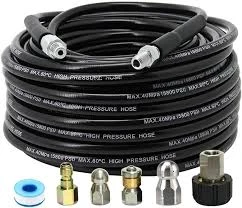134a manifold gauge
Understanding the 134a Manifold Gauge A Comprehensive Guide
In the world of HVAC (Heating, Ventilation, and Air Conditioning) systems, the R134a refrigerant is widely utilized, especially in automotive air conditioning systems and various refrigeration applications. To effectively service these systems, technicians rely on specialized tools, one of the most critical being the manifold gauge. This article aims to delve into what a 134a manifold gauge is, its components, and how to use it for maintaining and troubleshooting refrigerant systems.
What is a 134a Manifold Gauge?
A 134a manifold gauge set is a device used to measure the pressure of refrigerants and to monitor the performance of HVAC systems. Specifically designed for use with R134a refrigerant, it provides technicians with essential data needed for diagnosing issues, charging systems, and performing regular maintenance.
Key Components of a Manifold Gauge Set
A standard R134a manifold gauge set typically consists of three main components
1. Manifold Body The central part of the gauge set, often color-coded for easy identification—usually blue for the low-pressure side and red for the high-pressure side. The manifold body allows for the connection of hoses and gauges to the system.
2. Pressure Gauges These are the measuring instruments mounted on the manifold body. There are generally two gauges - Low-Pressure Gauge Monitors the pressure in the evaporator, indicated in psi (pounds per square inch). - High-Pressure Gauge Monitors the pressure in the condenser and compressor, also indicated in psi.
3. Hoses The set includes hoses that connect the manifold gauges to the HVAC system. These hoses are also color-coded—blue for the low-pressure side and red for the high-pressure side. A third yellow hose is used for connecting to a refrigerant tank for charging or recovery.
How to Use a 134a Manifold Gauge Set
134a manifold gauge

Using a 134a manifold gauge set requires a basic understanding of HVAC systems and safety precautions. Here’s a simplified step-by-step guide
1. Preparation Ensure that the AC system is turned off and that you have the necessary safety equipment, including gloves and goggles.
2. Connecting the Hoses Attach the blue hose to the low-pressure service port and the red hose to the high-pressure service port of the AC system. The yellow hose should be connected to the refrigerant tank.
3. Reading the Gauges Start the engine and turn on the AC system to its maximum setting. Observe the readings on the gauges. The low-pressure gauge should show a reading within the typical range for R134a (around 25-45 psi), while the high-pressure gauge usually reads between 150-250 psi, depending on the ambient temperature.
4. Diagnosing Issues Use the gauges' readings to diagnose potential problems. For instance, low readings on the low-pressure gauge may indicate a refrigerant leak, while extremely high readings could suggest a blockage in the system.
5. Charging the System If the system is low on refrigerant, gradually open the valve on the yellow hose to allow R134a to enter the system while monitoring the gauges.
6. Final Checks After charging, disconnect the hoses in the reverse order of connection and ensure all service ports are securely capped.
Conclusion
A 134a manifold gauge set is an essential tool for HVAC technicians working with R134a refrigerants. Understanding how to properly use this equipment not only enhances system performance but also ensures safe and efficient operation. With proper training and practice, technicians can effectively diagnose issues and maintain optimal functioning of HVAC systems, contributing to energy efficiency and comfortable indoor environments.
-
Ultimate Spiral Protection for Hoses & CablesNewsJun.26,2025
-
The Ultimate Quick-Connect Solutions for Every NeedNewsJun.26,2025
-
SAE J1401 Brake Hose: Reliable Choice for Safe BrakingNewsJun.26,2025
-
Reliable J2064 A/C Hoses for Real-World Cooling NeedsNewsJun.26,2025
-
Heavy-Duty Sewer Jetting Hoses Built to LastNewsJun.26,2025
-
Fix Power Steering Tube Leaks Fast – Durable & Affordable SolutionNewsJun.26,2025

